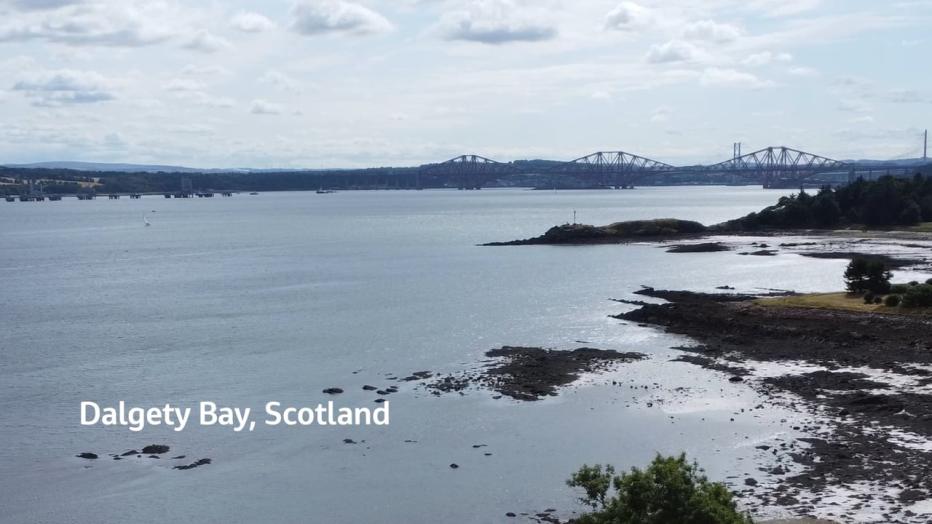
The Challenge
Radioactive residues were first detected on the foreshore of Dalgety Bay, near Dunfermline, in 1990, not far from a former airfield where radium-coated ‘glow in the dark’ aircraft components were incinerated and landfilled at the end of the second world war. The beach is safe for walking and sailing but the residues present a potential health hazard if material is disturbed or removed. The contaminated area is close to housing and a local sailing club and the issue has received a high media profile and significant scrutiny from the Scottish Environmental Protection Agency.
The Solution
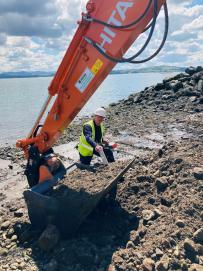
The Jacobs team developed instrumentation to detect and segregate radium sources of 10 kilobecquerels (kBq) with a 95% confidence interval, giving assurance to our clients and the regulator that our readings can be relied upon.
Our technology is based on the use of three-inch sodium iodide detectors placed over spoil — waste material brought up during an excavation or a dredging or mining operation — from the beach. The team modelled the detector response to sources buried in sand at a series of distances from the detector. They then developed an Excel/Visual Basic tool to control the detector system and interrogate gamma spectrometry data to establish whether material under the detector contained radium.
-
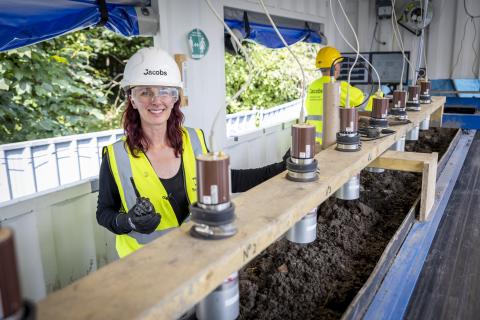
Jen Barnes with the radoactive material detector array
-
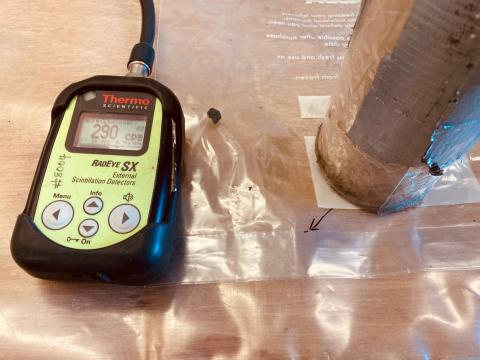
A radium particle detected in the beach soil
The system used four detectors, each covering a 52.5 ft² (1,600cm²) area of spoil up to 5.9 ins (15cm) deep. It was designed to examine up to 1765.7 ft³ (50m³) of material within an eight-hour working day. Although the system was able to achieve this, the excavation process struggled to maintain a steady stream of material. This problem was compounded by that fact that more sources were found than early characterization of the site had suggested.
To help our client meet its program targets, we doubled the capacity of the detector system, adding four additional sodium iodide probes. The eight-detector system successfully got the work back on track, with more than 100m³ of material examined on some days.
Once a particle is detected, it’s located and removed by hand using a two-inch sodium iodide probe. The system is designed to detect a 10 kBq particle about 30cm away from the detector under 15cm of spoil. At a more favorable position, particles of less than 0.1 kBq are detected. This has enabled us to significantly reduce waste volumes, as the team can remove very small radium particles without having to dispose of clean spoil.
-
264860
Cubic feet (7,500 cubic meters) of material to be scanned
-
3000
Number of radium particles detected and isolated to the end of August 2022
-
27.5
Estimated megabecquerels (MBq) of activity of radium particles removed and disposed of to the end of August 2022
-
15
Months it will take to fully remediate Dalgety Bay
Big Picture
Jacobs was selected to support the project because we have a multidisciplinary team capable of handling all technical aspects of radiation protection and remediation.
“We were able to bring a very diverse mix of skills including radiometrics, radiation protection and also physics modeling capability, where we used Monte Carlo techniques to predict what a detector would see when it was looking at material in a certain geometry. We have operatives with years of site experience who know how to deal with problems safely and all the elements of this multi-disciplinary team are available to us in-house.”
You might be interested in:
-
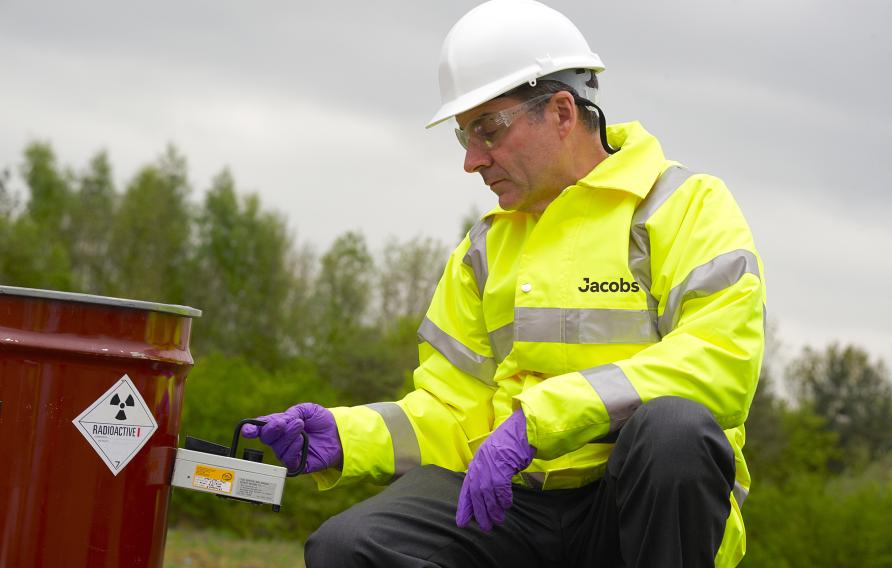 Page
PageRadiation Protection
From X-ray systems to regulatory compliance support, we provide a full-range of radiation protection services.
-
 Solution
SolutionANSWERS
Our ANSWERS software service provides software and consultancy services for customers worldwide in the areas of reactor physics, radiation shielding, dosimetry, nuclear criticality, well logging and nuclear data.














































